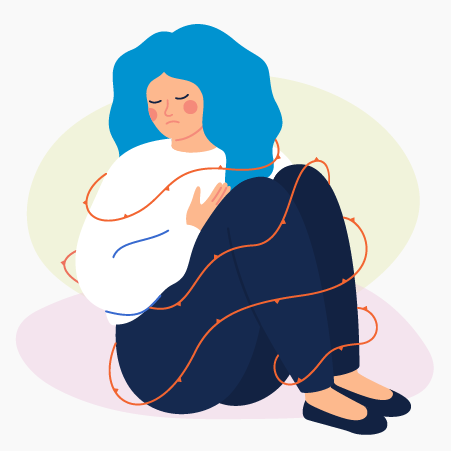Understanding Self-Injury
 We all have ways of dealing with overwhelming negative feelings like stress, pressure, and even numbness. If someone deliberately hurts their own body as a way of dealing with their own negative emotions, they are engaging in non-suicidal self-injury, which is sometimes called “self-harm,” “deliberate self-harm,” or simply “self-injury.” Self-injury is most common in teenagers and young adults. Indeed, nearly one in five teenagers report that they have ever self-injured.
We all have ways of dealing with overwhelming negative feelings like stress, pressure, and even numbness. If someone deliberately hurts their own body as a way of dealing with their own negative emotions, they are engaging in non-suicidal self-injury, which is sometimes called “self-harm,” “deliberate self-harm,” or simply “self-injury.” Self-injury is most common in teenagers and young adults. Indeed, nearly one in five teenagers report that they have ever self-injured.
The difference between the kind of self-injury that is used to feel better (or to feel at all) and the forms of self-injury with suicidal intent can be hard to tell. Most self-injury, especially in teens and young adults, is non-suicidal, which means that they do not want to die–they just want to feel better. But non suicidal self-injury is not a safe or healthy way to cope with emotions, and can have long-lasting physical and emotional effects.
Common Forms of Self-Injury
There are a lot of ways people can hurt their bodies, and most people who use self-injury to feel better hurt themselves using different methods. The most common forms of self-injury include:
- Cutting
- Burning
- Severe scratching
- Punching or hitting or other objects, like a wall with the conscious intention of hurting their body
- Carving words or symbols into their skin
Tattooing and piercing are not considered non-suicidal self-injury, although some people may use these practices as a way to self-injure.
Sometimes people who self-injure inadvertently hurt themselves more seriously than they intend to and may need medical attention. When this happens, the person who injures may resist seeing a medical doctor, even if they may need stitches or other care. Offering to accompany a friend in this situation to the emergency room or calling a family doctor for advice on treating an open wound can be helpful. If you are worried that the unintentionally serious wound may be lethal, call 9-1-1.
Self-Injury as a Coping Mechanism
People who self-injure use behaviors like cutting, scratching, or burning as a way to cope with overwhelming feelings–or lack of feeling at all, a condition called “dissociation.” There are a lot of different reasons people give for doing it, but some of the most common are to:
- Manage or distract from negative or unwanted feelings
- Express feelings that feel overwhelming and hard to share otherwise
- Feel something if they feel numb emotionally
- Feel a sense of control
- Show people in their lives that they are hurting
- Punish themselves for things they believe they’ve done wrong
Self-Injury is often cyclical
Many people who use self-injury as a primary way of coping go in and out of periods where they self-injure. So they may use cutting or other forms of self-injury over a period of time–for example, when they are going through a stressful situation–then stop for a while. Sometimes they can stop for weeks, months, or even years.
However, unless they find and use other more healthy ways of coping, they are likely to turn to self-injury again to manage stress or negative feelings. This can make loved ones who are aware of the self-injury feel like they are walking on eggshells, since they never know when their friend or family member may start injuring themselves again. This is a challenging pattern to stop without help. If you or someone you know is self-injuring, it’s important to reach out for support.
Excerpted from “Understanding Self-Injury” from the JED Foundation. Read the full article for information on hiding self-injury behavior, the long-term effects of self-injury, how to help someone who self-injures, and more.
Source: The JED Foundation | Understanding Self-Injury, https://jedfoundation.org/resource/understanding-self-injury | Copyright 2022 The JED Foundation
Do you need someone to talk to? To schedule an evaluation or to get advice about your child’s or teen’s challenges, call or email a CHC Care Coordinator at 650.688.3625 or careteam@chconline.org CHC teletherapy services are available now.





